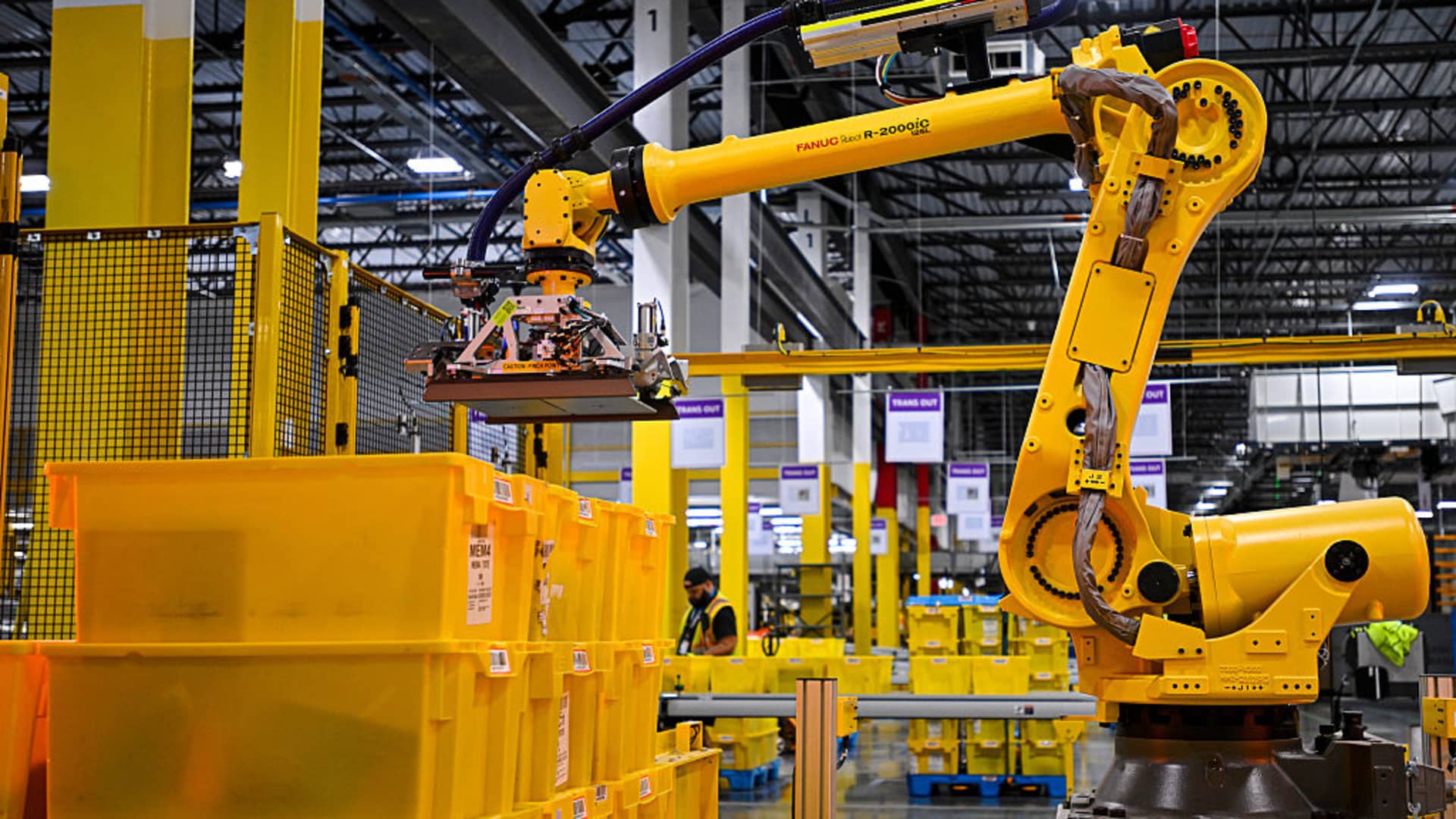Morgan Stanley says Amazon could save up to $4 billion a year now and more than $10 billion by 2030 as GenAI and warehouse robotics speed picking packing and sorting. The shift boosts margins and delivery times while raising reskilling and job displacement challenges for communities and policy makers.

Amazon’s accelerating move to shift routine warehouse tasks to robots, coordinated by generative AI, could save the company up to $4 billion a year in the near term and more than $10 billion a year by 2030, according to Morgan Stanley analyst Brian Nowak, in remarks reported by CNBC. Those savings come from lower labor costs and faster throughput as robotics and GenAI optimize picking packing and sorting across fulfillment centers.
Retail fulfillment is deeply labor intensive. Millions of daily actions involve picking packing and sorting items across a global network. Two technological trends are accelerating automation in this space:
In practice GenAI models help schedule work flows predict demand and coordinate fleets of robots and human operators to streamline operations. Reports commonly cite Amazon investing tens of billions in robotics and AI upgrades, often in the range of 25 to 35 billion dollars, to buy robots build software and integrate systems across fulfillment networks.
Robotics driven cost savings feed directly into fulfillment margins enabling better earnings per delivery. As more facilities adopt these technologies fixed investments amortize and per unit costs fall creating strong scale economies. The market may be under appreciating Amazon's GenAI advances in retail where robotics driven efficiencies matter for competitive positioning.
Large scale automation raises real risks of job displacement for entry level warehouse roles. Amazon's model has tended to create fewer higher skilled technical and supervisory positions that do not match the headcount of displaced workers. The transition creates a pressing need for reskilling programs workforce planning and public private partnerships to manage social costs.
Automation at scale drives competitive pressure across retail and logistics to invest in AI and robotics or to differentiate with service models that rely more on human labor. Policy makers and labor advocates will likely demand transparency on AI decision making safety standards and the scale of workforce impacts.
GenAI optimizes task routing predicts demand and enables adaptive coordination between robots and humans. Combined with robotics hardware it raises throughput reduces errors and shortens fulfillment lead times.
Robots take on repetitive physical tasks increasing speed and reliability. When throughput rises per item labor costs fall producing measurable annual savings as modeled by Morgan Stanley.
Automation will reduce many entry level roles but create technical supervisory and maintenance positions. The net effect on employment depends on scale timing and the availability of reskilling and local labor market adjustments.
Amazon's robotics push supported by GenAI is poised to reshape fulfillment economics. Morgan Stanley's projection of up to 4 billion dollars in near term savings and more than 10 billion dollars by 2030 is a clear signal that automation remains central to retail strategy. Businesses should evaluate both the productivity upside and the social responsibilities that come with workforce changes while tracking actual savings in quarterly results.
Want a deeper analysis? Contact Beta AI for a custom assessment on how robotics and GenAI can optimize your supply chain and what reskilling initiatives will mitigate workforce impact.



